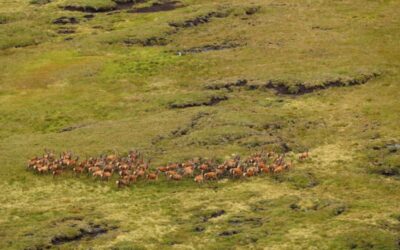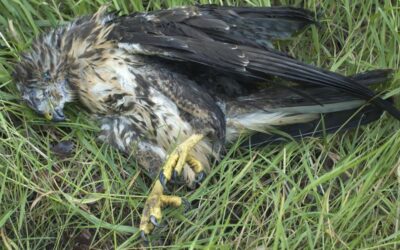At this year’s Local Authorities Pollinator Conference Louisa Maddison gave a most impressive update on the actions being taken across South Lanarkshire to help pollinators. With the balmy days of summer a distant memory it seems appropriate to bask in a little reflected heat by looking back on what went on.

One of the key approaches that Louisa and her colleagues adopted last year was partnership working. “We were so grateful that we teamed up with Butterfly Conservation”, she explains. “They passed on a range of expertise and knowledge not only to our own staff, but to a range of enthusiastic volunteers. As a result three sites really benefitted hugely — Bothwell Road Park in Hamilton, and both Stonefield Park and White Gates Orchard in Blantyre.” The Countryside and Greenspace team clearly maximised the benefit of working with such as skilled partner “We held several information sessions for the public and our volunteers in summer 2021. This was an ideal opportunity to explain the importance of creating space for pollinators in urban areas. They helped us plant wildflower plugs, to sow seeds, and as we headed into autumn 2021 volunteers returned to assist with clearing end of season cuttings and planning the next season’s work.”.
Butterfly Conservation aren’t the only valuable partners that South Lanarkshire work with.
Buglife’s national B-Lines project has enjoyed considerable success in Lanarkshire and celebrated a number of successes in 2021. “This certainly was another success story”, says Louisa. “Our ‘Making a B-Line in the Clyde Valley’ project with Buglife Scotland was funded by the Biodiversity Challenge Fund and completed in Spring 2021, which was with grateful thanks to a funding extension. During the year the sites were monitored for success; a formal monitoring programme will be put in place in 2022 and I think we are quite excited about what we will find out next year.”
Buglife’s B Lines is hugely popular and stunning project. For anyone who isn’t familiar with the project it’s a great step along the road to addressing the problem of the loss of flowers and pollinators. B-Lines are basically ‘insect pathways’ running through urban and rural settings along which Buglife work with partners to restore and create corridors and areas that are wildflower-rich and effectively act as habitat stepping stones.
With an active South Lanarkshire Biodiversity Partnership there is a ‘buzz’ about the direction this Local Authority is heading in. Take a walk through Milheugh meadow in Blantyre and you can see the thought that has gone into the site. The raised beds at the orchard are complemented by pragmatic grass paths through the main site that make access through the meadow area easy and a real close up nature experience. It’s a similar approach to the one taken at the popular and sometimes busy Strathaven Park which blends public access with pollinator havens in a cleverly integrated fashion.
Another thing that South Lanarkshire Council can be very proud of is that fact that they not only improve sites for pollinators, but actively plan how to manage them into the future. Louisa takes up the story. “Yes, whilst I’m pleased to report that more pollinator and wildlife-friendly sites are being added to our list, I’m equally delighted that we are committed to maintaining them too. This year, for example, yellow rattle seed collection at the “Meadow Makers” event at Fernbrae Meadows in July was a distinctive part of ongoing meadow management.

The work at Fernbrae Meadows is really impressive on a national let alone a local scale. Many residents remember it is a golf course, and when that folded there were concerns about the future of the abandoned site when it began to attract anti-social behaviour. But the Green Infrastructure Funded project that helped enable a transformation into a Community Park has worked really well. The nearby communities of Fernhill, Cathkin and Castlemilk are delighted to have this great resource on their doorstep.”
Karen Smith is the South Lanarkshire Countryside Ranger who counts Fernbrae Meadows as being in her patch. With a vibrant community group — Friends of Fernbrae Meadows — continuing the good work the council established it’s an encouraging outlook for pollinators. “We are using our Nature Restoration Fund to improve various sites for pollinators and in 2021 this work mainly involved preparing sites for seeds and plants that will be in place in 2022. It’s an exciting time for sure. I think our meadows look fantastic and because of the number of identification and volunteer sessions we have run I think we are helping people appreciate that flowers and pollinators go hand in hand. By getting local communities involved the stewardship and sense of local involvement is excellent. Even things like learning to love a little long grass is taking hold as the world looks to tackle the challenges facing our vital insects. People’s understanding of why we are a making space for nature makes long-term management of meadows so much easier.
“The one thing I remember about our seed gathering day was how nice it was for people to sit in the meadow and get up close and personal with a variety of species. Young and old meadow makers had fund spotting ladybird larvae, and they were comparing paper bags of yellow rattle seeds like it was gold dust.”
Between meadows, B-Lines, community engagement, and volunteer enthusiasm there is so much to celebrate in South Lanarkshire. And as we head into winter that brings a warm golden glow in anyone’s book.



0 Comments